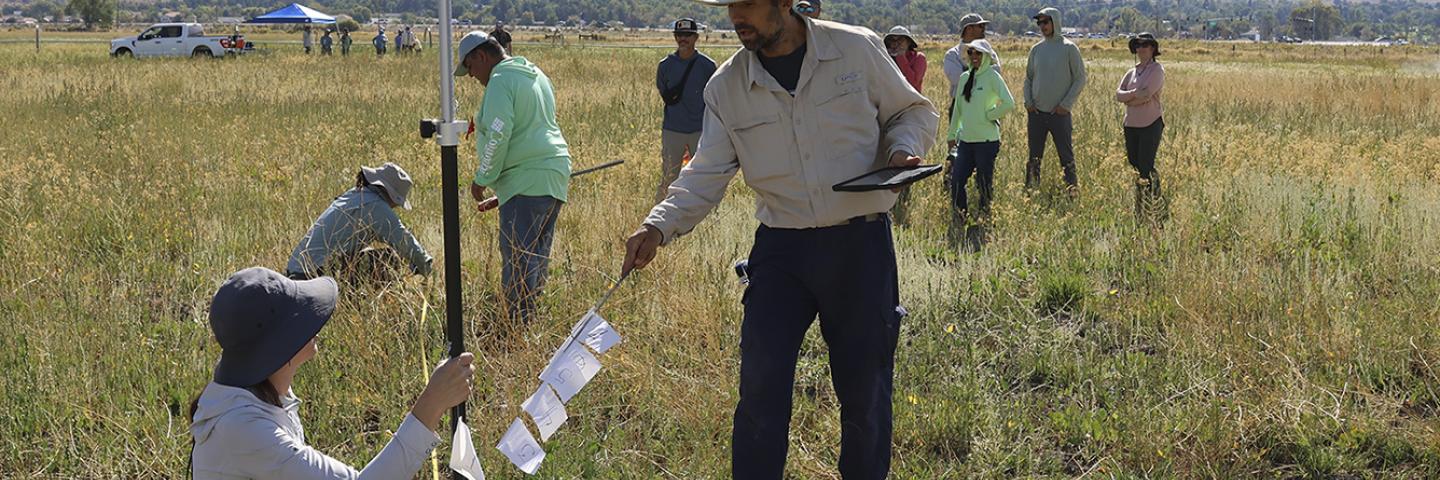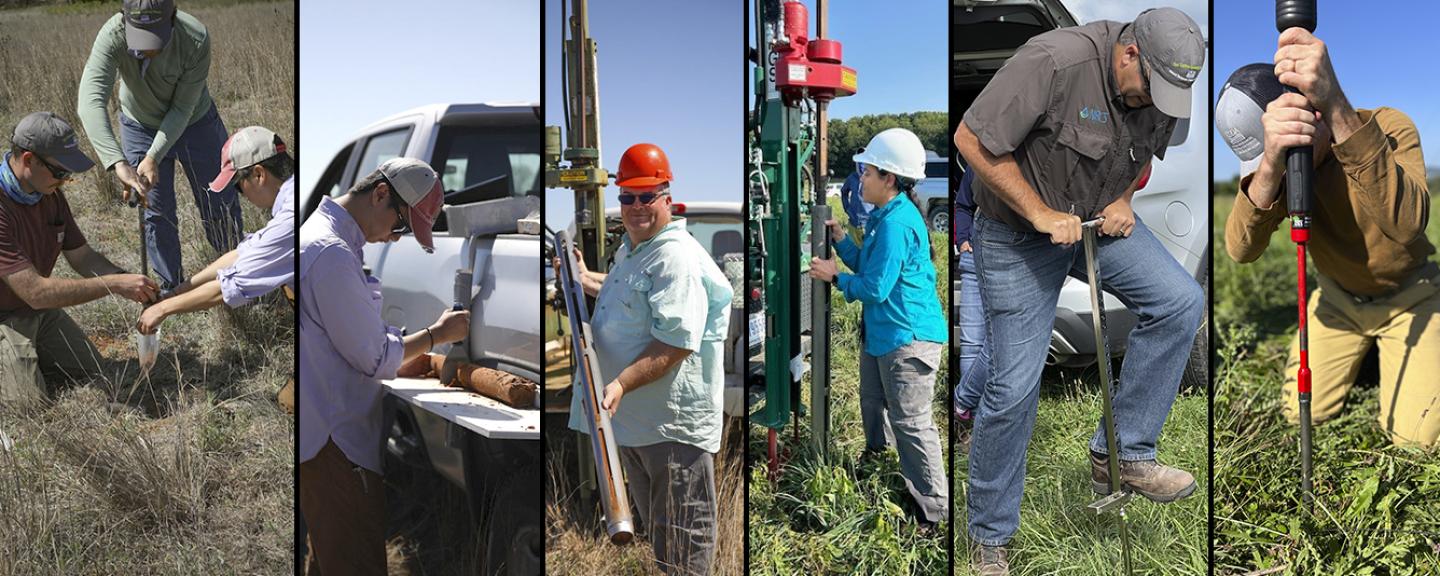
Effective beginning 5/20/2025: Please note this site is under review and content may change.
The Soil Carbon Monitoring Network (SCMN) was established by the Natural Resources Conservation Service (NRCS), an agency of the United States Department of Agriculture (USDA), to support the implementation of Sec. 21002(a)(2) of the Inflation Reduction Act. It is one of seven action areas for the implementation of the Inflation Reduction Act GHG Quantification effort, which supports USDAs broader Measurement, Monitoring, Reporting, and Verification (MMRV) portfolio.
The goal of the SCMN is to collect field-based data to assess and track trends related to soil carbon sequestration associated with conservation programs and management practices on cropland, pastureland, and range lands across the country.
The SCMN team will conduct soil sampling, perennial biomass, and management data collection on sites across the United States and Puerto Rico. Data collection started in fiscal year 2024, with plans to expand in fiscal year 2025 and should be fully implemented on the remaining sites between fiscal years 2026 and 2030. The SCMN team plans to revisit sites on a 5- to 10-year recurring basis to monitor soil change over time. Resampling of sites is planned to begin in fiscal year 2030.

The information gathered from this effort will be used to:
- Provide data for tools and models to improve conservation outcome estimates and advance the national greenhouse gas inventory.
- Evaluate which management practices are most effective at increasing soil carbon sequestration.
- Establish a baseline of soil carbon on farms and ranches to estimate carbon sequestration potential on working lands.
- Encourage the adoption of best management practices for improving soil carbon, which other research has shown can result in improvement in soil function such as higher water holding capacity, increased fertility, and improved soil tilth.
- Provide policy makers information upon request.
- Data will be analyzed in several different ways. The sampling design is not structured to capture statistical difference on individual farms; the design supports analysis across sites. Data privacy will be protected following statutes and codes in the use of the data.
Webinar Overview of The Soil Carbon Monitoring Network
Nationwide Planned Sampling Map
The map below is a hypothetical visual of sampling coverage around the country. These are not exact sampling points depicted.

Framework and Protocols
The SCMN Framework (PDF) document presents a conceptual framework for the SCMN’s site selection, sampling, and analysis strategies to systematically assess soil carbon change on working lands based on climate, geography, management practices, and soil properties. The goal of this document is to outline site selection and sampling rationale, processes and procedures to guide initial site selection, ongoing assessments, and prioritize future SCMN sites. This document is part of a set of documents sharing the Natural Resources Conservation Service (NRCS) protocols for the SCMN. Protocols will be updated as needed.
The Field Instructions for Vegetative Data and Soil Sample Collection (PDF) document is one in a series that outlines the NRCS approach for the SCMN for field sampling on working croplands and grazing lands across the country.
The SCMN Soil Survey Office Sample Processing and Shipping Instructions (PDF) document is part of a set of documents sharing the Natural Resources Conservation Service (NRCS) protocols for the Soil Carbon Monitoring Network (SCMN). Protocols will be updated as needed. This document will lay out the initial intake and processing procedures performed at soil survey offices and the shipping instructions for forwarding processed samples to the National Caron Assessment Laboratory (CAL) in Lincoln, Nebraska. The CAL will be primarily responsible for the further laboratory analysis of samples initially processed at the soil survey offices. The topics include a brief summary of the sample processing and shipping procedures; safety and personal protective equipment (PPE); materials needed; detailed procedures for data entry, drying and sieving, bulk density measurement, sample shipping preparation and packaging, required documentation, and coordination requirements.
NRCS Continues to Expand Inflation Reduction Act Opportunities
NRCS released an updated list of Climate-Smart Agriculture and Forestry Mitigation Activities eligible for Inflation Reduction Act funding in fiscal year 2025, which includes 14 new activities.
For more information, find your local service center contact information here: https://www.farmers.gov/working-with-us/service-center-locator


